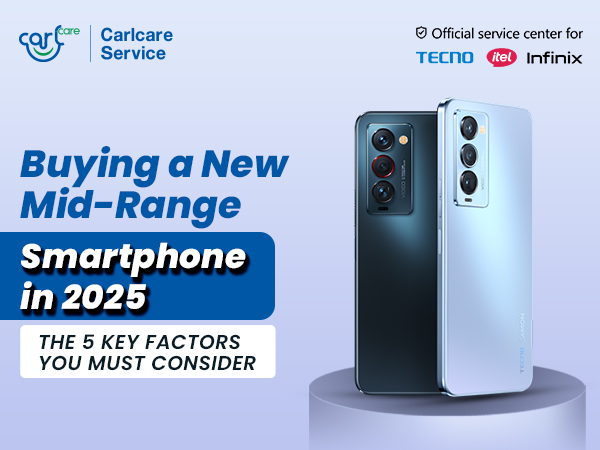
Do you know there’s Developer Options in your Android Smartphone that offer a rich set of tools and settings to significantly enhance your device’s capabilities and customization. While primarily aimed at developers (professional), these features can be incredibly useful for any user looking to get more out of their smartphone.
Remember to use these settings with caution, as some changes can affect the performance and stability of your device. This article will guide you through the process of unlocking Developer Options and using some of the most useful features it offers.
How to Unlocking Developer Options?
Step-by-Step Guide:
- Open Settings: Start by opening the Settings app on your Android device.
- About Phone: Scroll down to find and tap on "About phone."
- Build Number: Locate the "Build number" entry. It might be under a sub-menu called "Software Information" on some devices.
- Tap Multiple Times: Tap on the "Build number" entry seven times. You might need to enter your device’s PIN or password.
- Confirmation: A message will appear saying “You are now a developer!” indicating that Developer Options are now unlocked.
Accessing Developer Options
Once unlocked, Developer Options can be found in the main Settings menu, typically under "System" or "Additional settings," depending on your device.
What are the Key Features and Settings in Developer Options
- USB Debugging
USB Debugging allows your Android device to communicate with a computer running Android SDK (Software Development Kit) to use advanced tools. This feature is essential for developers to test apps on their devices. It’s also used by advanced users for rooting, flashing custom ROMs, or transferring data between the device and a computer using ADB (Android Debug Bridge).
How to Enable USB Debugging: Find the "USB debugging option, and toggle the switch next to it.
Caution: Keep USB Debugging disabled unless you need it, as it can pose a security risk if your device is connected to an untrusted computer.
- Stay Awake
As the name suggests, this feature keeps the screen on while charging. It’s useful for running apps that require constant monitoring, such as those displaying real-time data or during development when you need to keep the screen on to observe changes.
- How to Enable: Simply, toggle the switch next to "Stay awake."
- Caution: This setting is generally safe to use but can increase screen burn-in risk if used excessively.
- OEM Unlocking
OEM Unlocking Allows the bootloader to be unlocked, a necessary step for rooting and installing custom ROMs. This is essential for users looking to gain root access or install custom firmware, which can significantly customize and enhance the device’s functionality.
How to Enable: Toggle the switch next to "OEM unlocking." Note that this might void your warranty and erase all data.
Caution: This should only be used by experienced users, as unlocking the bootloader can lead to data loss and void warranties. It also opens up the device to potential security vulnerabilities.
- Running Services
Running Services option shows the currently running services and the amount of RAM they are using. It helps to identify and manage resource-hungry apps, allowing you to stop unnecessary services to free up memory and improve performance.
How to Access: Tap on "Running services" to view detailed information.
Caution: While generally safe, stopping critical system services can cause instability. Only stop services if you are sure they are not essential to the system’s operation.
- Limit Background Processes
The "Limit Background Processes" feature in Android’s Developer Options allows you to restrict the number of processes that can run in the background. Normally, Android manages background processes efficiently, keeping a certain number active to ensure smooth multitasking and quick app switching. However, by limiting these processes, you can control how many background tasks the system allows, potentially improving performance and battery life, particularly on older or low-end devices.
Practical Use
Limiting background processes can be especially beneficial for devices with limited RAM and processing power. Here's how it can help:
- Improved Performance:
- Reduced Resource Load: By limiting the number of background processes, you can reduce the strain on the CPU and RAM. This can lead to a more responsive and faster user experience, as the system doesn’t need to manage as many tasks simultaneously.
- Faster App Switching: With fewer background processes, the device can allocate more resources to the active app, making switching between apps faster and smoother.
How to Open This?
- Scroll through the Developer Options menu until you find "Limit background processes."
- Tap on it to open the menu.
Select the Limit:
- You’ll see several options, such as:
- Standard limit: This is the default setting, allowing Android to manage background processes automatically.
- No background processes: No apps will be allowed to run in the background. This is the most restrictive setting and can significantly improve performance and battery life, but at the cost of multitasking capabilities.
- 1 process: Only one background process is allowed.
- 2 processes: Two background processes are allowed.
- 3 processes: Three background processes are allowed.
- 4 processes: Four background processes are allowed.
- Select the number of background processes you want to allow based on your needs.
The "Force GPU Rendering" feature in Android’s Developer Options compels apps to use the device’s Graphics Processing Unit (GPU) for 2D drawing operations. Normally, Android decides when to use the GPU or CPU for rendering tasks, balancing performance and power consumption. By enabling this feature, you override the system’s default behavior, ensuring that the GPU handles all 2D rendering tasks.
Practical Use
Forcing GPU rendering can have several benefits, particularly for devices with powerful GPUs and apps that benefit from enhanced rendering capabilities:
- Improved Performance:
- Enhanced Graphics Rendering: The GPU is designed to handle complex graphical tasks more efficiently than the CPU. By forcing GPU rendering, graphical elements and animations in apps can appear smoother and more responsive.
- Faster User Interface (UI): Apps with heavy graphical elements, such as games and certain UI-heavy applications, can benefit from quicker rendering, resulting in a more fluid user experience.
- Better Visuals:
- Smoother Animations: Animations and transitions can become smoother and more visually appealing as the GPU processes them more efficiently than the CPU.
- Higher Frame Rates: In apps where frame rate is crucial, such as in gaming or video playback, GPU rendering can help maintain higher and more consistent frame rates.
How to Enable "Force GPU Rendering": Toggle the switch next to "Force GPU rendering."
- Caution: While generally safe, forcing GPU rendering can cause issues in apps not designed for it, potentially leading to crashes or graphical glitches.
- Window Animation Scale
The "Window Animation Scale" setting in Android Developer Options controls the speed of window animations, which are the animations you see when opening and closing apps or navigating between different screens. This setting allows you to adjust how quickly these animations play, thereby altering the perceived speed of your device.
Practical Use
Adjusting the "Window Animation Scale" can significantly impact how fast and responsive your device feels. Here’s a detailed look at the practical benefits and usage of this feature:
- Perceived Performance:
- Faster Device Feel: By reducing the animation scale, you can make your device feel faster because the animations take less time to complete. This can make opening and closing apps seem more instantaneous.
- Reduced Waiting Time: Shorter animations mean you spend less time waiting for transitions between apps and screens to complete, which can enhance overall productivity.
- Customization for User Preference:
- Tailored Experience: You can customize the animation speed to match your personal preference. Some users prefer snappier, quicker transitions, while others might like the visual appeal of slower, more fluid animations.
- How to Use: Tap on "Window animation scale" and select your preferred speed (e.g., 0.5x for faster animations).
- Caution: Changing animation scales is safe and can be easily reverted. Adjust based on your preference for animation speed.

















